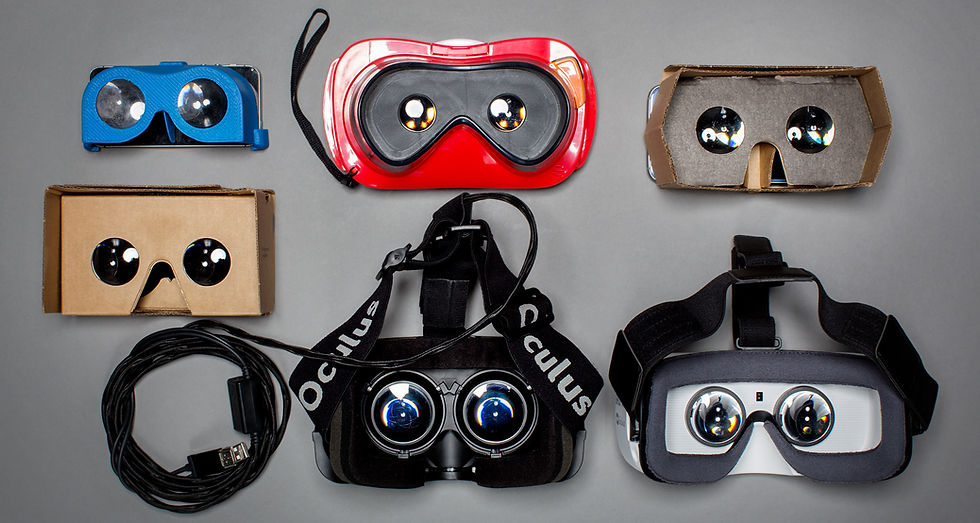How to use Virtual Reality (VR) for non-profit and STEM outreach campaigns
- Natalia Kossobokova
- Apr 27, 2018
- 3 min read

During this week's Mid-Atlantic Marketing conference hosted in Washington D.C., a group of Virtual Reality (VR) experts shared their thoughts on the most creative VR experiences they've encountered. They also talked about where this technology is headed in the future and how it will tell deeper and richer stories for future audiences.
I was inspired by the panel's examples of how this technology is helping make a positive impact worldwide. VR has been used to manage international White House negotiations, recruit future Science Technology Engineering and Mathematics (STEM) students and even train healthcare workers in Africa.

Here is a closer look at some additional campaigns where companies have taken a chance on VR to make a positive impact:
Expedia's goal with this VR campaign was to boost patient morale, while allowing the travel company to gain some powerful brand recognition. Since the young patients cannot see the world, Expedia decided to bring the world to them. Users for this VR experience are able to travel to their ideal far-off destinations using the headset without leaving the comfort of their bed.
In addition to providing these experiences for children, Expedia also donated proceeds from the campaign's home page to the cause. Users could donate dollars in exchange for Expedia rewards points. Watch the full experience here:
Last year, I had was thrilled to experience Buzz Aldrin's virtual reality experience at the annual Space Symposium in Colorado. Not only could current STEM students meet Buzz Aldrin during this exclusive experience, but they could also take a trip to Mars using a VR headset. Users enjoyed the ability to walk on Mars, follow instructions and imagine themselves as inhabitants on the red planet. The entire journey can very well be compared to the 2015 movie, The Martian.
This kind of VR mission can certainly be used for STEM outreach for STEM recruitment events at middle schools, high schools and colleges. Having an ability to walk on Mars and be a part of the mission certainly serves as an inspirational tool for getting students interested in STEM subjects. The experience was produced by 8i and LIFE VR, currently available for the Ocuulus Rift in the Oculus store. You can get a behind-the-scenes look at the software here:
Is the cost of implementing VR expensive?
The cost of implementing VR has certainly decreased over the past few years, mainly due to the shrinking cost of smartphones - a key physical component in many VR headsets. One panelist explained that just six years ago, setting up a VR experience involved multiple computers, customized headsets and years of work. Nowadays, it's a lot easier for smaller organizations to adopt VR by using the 360 degree effect (often used in the real estate business) as well as purchasing cardboard or plastic smartphone headsets.
"On the entry level, 360 [VR] is still engaging and simple to make. A $300 consumer camera can get it done and it's getting a lot of traction right now," said Billy Twigg, President of award-winning Digital Agency, Alex + Tom.
"Making VR accessible at different price points is the best way to make it widespread." said Tom Kelley, Director of Design at Corporate Office Properties Trust (COPT).

Other panelists suggested making VR a more comfortable environment in order to increase adoption among audience members. You can add a spinning chair for those who are afraid to stand up and bump into something while they're walking around with their headset on. This allows mobility while preventing them from walking off-base. Another piece of advice was to collectively listen to people interacting with the environment, collect feedback and improve the experience going forward.
Glossary:
Virtual Reality (VR): Complete visual and audio immersion when you put on your headset. Video Example: Star Wars Battlefront Rogue One: X-Wing VR Mission.
Augmented Reality (AR): Content is displayed on top of reality as soon as you put on your headset. Content and reality do not interact with one another. Video Example: Google Glass Applications
Mixed Reality (MR): A type of augmented reality. This is where both the real world components and digital components are able to interact. Example: The Modern Workplace with Hololens Mixed Reality
Please note that these definitions are still widely debated. For more in-depth explanations and examples, be sure to check out these stories on foundry.com and thenextweb.com.










Comments